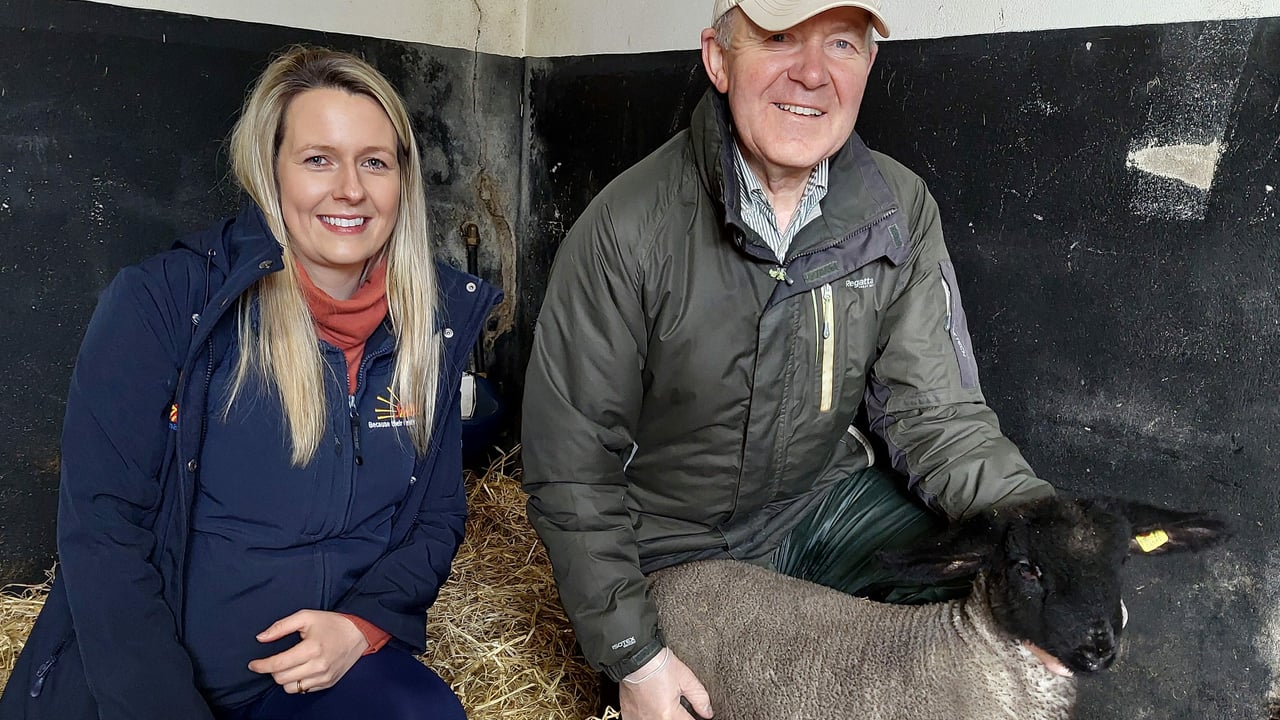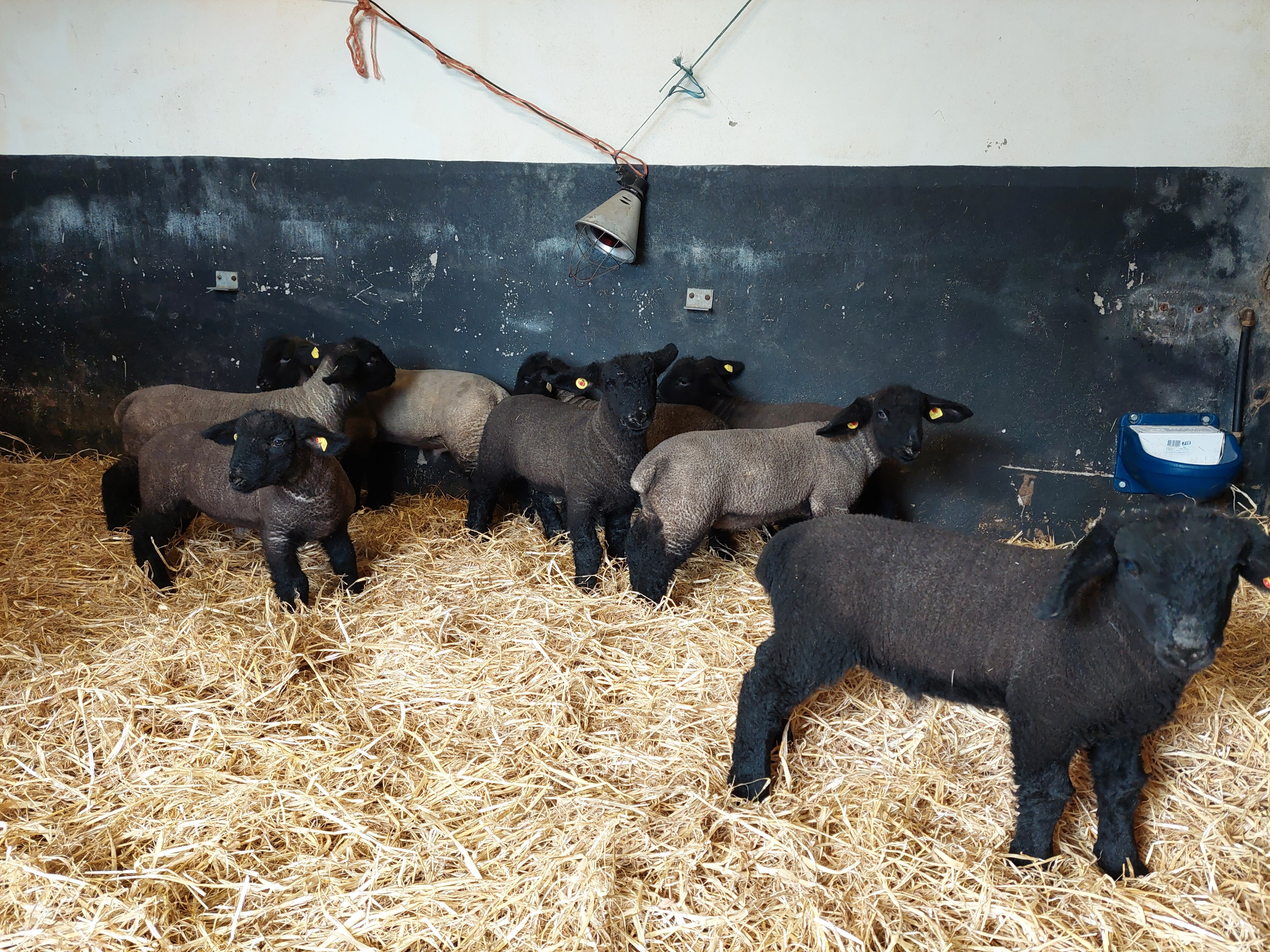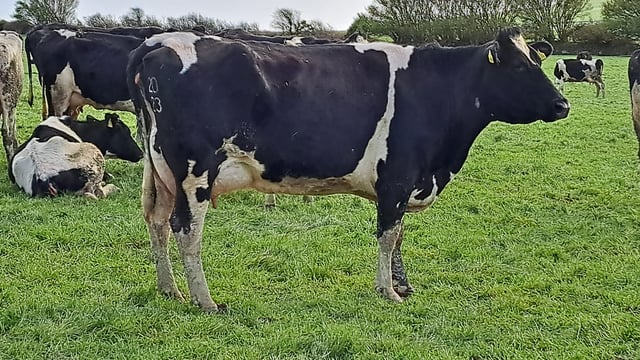Sponsored Article

Sponsored Article
Donegal lambs on milk replacer outperform twins suckling ewe
Sponsored Article

Seamus Browne runs Errigal Suffolks at Listillion near Letterkenny, Co. Donegal. The flock was established in 2008 and since then, from an initial select group of six females, he now has 80 pedigree ewes and four stock rams and his flock rates as one of the best in Ireland.
Lambs are regularly weighed as part of Sheep Ireland’s Eurostar program; they are also muscle-scanned to monitor performance.
Errigal Suffolks are renowned for excellent ratings on the program and, based on performance results, has been recommended by Sheep Ireland to other breeders.
Lambing gets underway on the farm at the end of December with Ewe-reka milk replacer used to artificially rear surplus lambs that cannot be reared on the ewe, usually triplet and quad lambs.
Seamus has been feeding Ewe-reka for three years. He was initially drawn to it for the simple reason that it included ewes’ milk and he had heard good reports from other breeders.
“It made sense to feed lambs a milk replacer that was as close as possible to their mother’s milk," he said.
Lambs are fed fresh colostrum from the ewe where possible.
“Feeding newborn lambs colostrum little and often every few hours during the first 24 hours is the secret, volume required will vary depending on lamb birthweight," Seamus explained.
"A 5kg lamb must receive a minimum of 1L colostrum within the first 24 hours."
Colostrum is key to getting newborn lambs off to the best possible start, as they are born with zero immunity and are totally reliant on their first feed of colostrum to protect against disease in their new environment until they build up their own active immune system.
Seamus invested in an automatic feeder to rear his surplus lambs, allowing them to drink little and often with constant access to milk.
Young lambs struggle to digest large feeds in a single feed therefore this system is well suited to their needs.
The feed conversion efficiency of a lamb is far greater during the milk feeding period, at 2.1 compared to 6.1 as they get older.
Each of Seamus’ lambs consumes approximately 13-15kg of milk replacer for seven weeks on the ad-lib system.
For him, the results seen in both health and performance of lambs reared on Ewe-reka have been exceptional with no poor thrive in multiple birth lambs.
“All the multiple birth lambs reared artificially performed equally as well as their single-born siblings and in some cases better than twins fed by their mothers,’’ he said.
Ewe-reka is an extremely easy and safe product to use, Seamus said, with excellent palatability and no evidence of digestive or infective upsets.
“I think the inclusion of ewe’s milk in the milk replacer definitely reduces the risk of bloat in the lambs fed on the feeder,’’ he added.
Seamus is satisfied that he has found a product that delivers the high performance he expects from the flock genetics.
After a visit to Errigal Suffolks in the first week of February, Dr. Amanda Dunn and Joe Murphy, of Ewe-reka manufacturer, Bonanza Calf Nutrition, noted that lambs born at the beginning of the year and reared on Ewe-reka weighed more than 20kg.
“With excellent genetics, colostrum management, good nutrition, and overall husbandry these lambs were performing excellently,’’ Dr. Dunn said.
When using an automatic feeder, she advises that it is vital to ensure the machine is working effectively and dispensing the required weight of powder per litre of milk.
Regular calibration on an automatic feeder is therefore essential to ensure lambs are consuming the correct milk solids.
“The solid content of ewes’ milk is around 20%, therefore we like to mimic this when artificially rearing lambs,’’ Dr. Dunn said
“This is 200g powder made up to a litre of mixed milk.”
With ad-lib milk feeding, aim for 17-20% solids.
“The most important thing is that the feed is consistent,’’ Dr. Dunn said.
“Beware of anything like a change of water pressure as this can effect machines and result in the wrong consistency being supplied to the lambs.’’
A handheld refractometer will determine colostrum quality and also the total solids content of mixed milk being fed to lambs.
“It is a quick and easy way to give you peace of mind that the lambs are getting fed the right amount of powder,’’ Dr. Dunn suggests.
Any deviations from the norm, such as in milk consistency, temperature and availability, can result in digestive upsets in young lambs.
Dr. Dunn emphasised the importance of providing lambs with clean water and creep concentrate feed from day one.
“The earlier it is available, the earlier they will start exploring and nibbling,’’ she said.
“The water part of the milk replacer won’t be going into the rumen therefore drinking water must be available to help promote rumen development and digest the creep feed.’’
This will help to avoid growth checks that might be likely when milk is removed from the diet.
Surplus lambs at Errigal Suffolks are weaned at around seven weeks, when they are not totally reliant on milk as they already have access to ad-lib ration and clean water.
Lambs are weaned abruptly. “I find weaning them abruptly means less chance of digestive upset,’’ Seamus said.
For more information on Seamus' feed of choice, Ewe-reka, click here.
Sponsored Article







